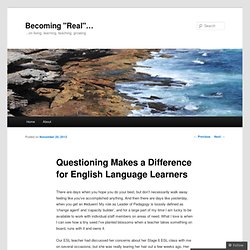

2013@KHS Episode 1. FreeBIEs. Results prove there's power in the pack. Three's company ...

Tim Gollan, Dennis Kim and Austin Ly, of Sydney Boys High School, achieved top results in this year's HSC. Photo: Janie Barrett THE principal of Sydney Boys High School, Kim Jaggar, says ''the lone wolf is dead'' and that collaborative learning - students working together, teachers sharing their knowledge with each other - is key to the school's success. Forty-seven students at the selective school, which ranked fourth in the state, yesterday learned they had achieved Australian Tertiary Admission Ranks of 99 or above. ''In a highly competitive environment, I think collaboration amongst boys … has [delivered] a more consistent set of results,'' Dr Jaggar said. ''The idea I've been trying to push at this school for a decade or more is that the lone wolf is dead. Advertisement His teachers collaborate on projects, observe each other's classes and share their experience. With his ATAR of 99.2, the school captain, Tim Gollan, 17, plans to study law and engineering.
Collaborative Learning in the Language Arts Classroom. EMC Publishing, 875 Montreal Way, St.

Paul, MN 55102 Tel: 800-328-1452 From literature circles to “jigsaw” research projects and reciprocal teaching to Socratic seminars, the applications of collaborative learning to the language arts classroom are rich, varied, and exciting. Collaborative activities can increase student achievement (Slavin, 1995), boost motivation (Brookover et al, 1979), add variety and interest, and allow you to differentiate instruction to target students’ needs, interests, and aptitudes. Preparing and Supporting Students Working together in small and large collaborative groups requires interpersonal skills that must be explicitly taught and modeled for students. Listening activelyasking questionsanswering questionsparaphrasing others’ ideas and asking for clarificationdisagreeing respectfullysynthesizing ideasdrawing conclusions. The Collaborative Classroom.
M.B.

Tinzmann, B.F. Jones, T.F. Fennimore, J. Results prove there's power in the pack. Questioning Makes a Difference for English Language Learners. There are days when you hope you do your best, but don’t necessarily walk away feeling like you’ve accomplished anything.

And then there are days like yesterday, when you get an #eduwin! My role as Leader of Pedagogy is loosely defined as ‘change agent’ and ‘capacity builder’, and for a large part of my time I am lucky to be available to work with individual staff members on areas of need. What I love is when I can see how a tiny seed I’ve planted blossoms when a teacher takes something on board, runs with it and owns it. Our ESL teacher had discussed her concerns about her Stage 6 ESL class with me on several occasions, but she was really tearing her hair out a few weeks ago. Her class is comprised of 9 boys, all who have been in Australia fewer than five years. Scratching my head, I suggested a few tactics. I’ve long been fascinated by questioning methods, and was exposed the notion of “wait time” (or “latency”) in the early days of my teaching in LA as part of the TESA program.